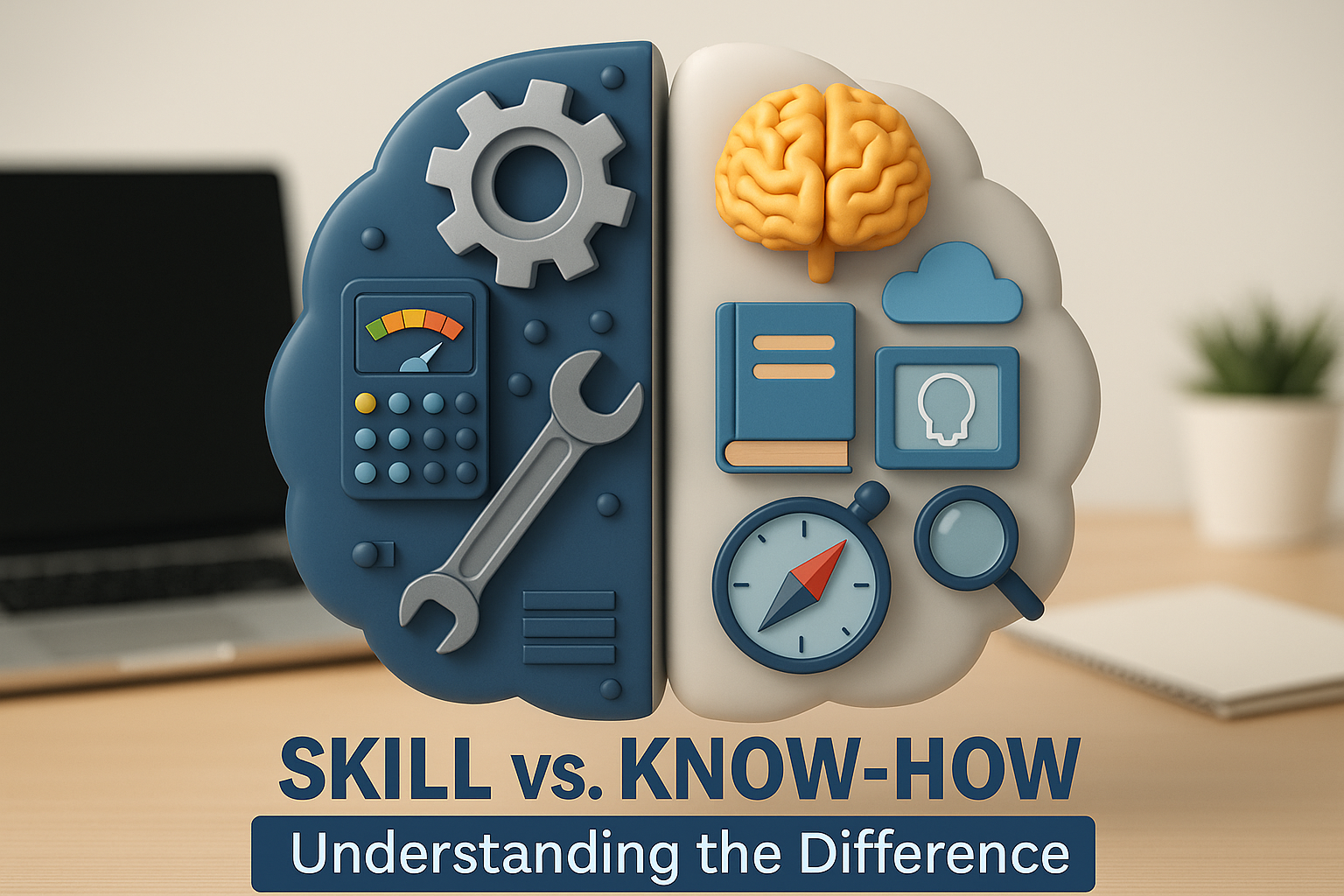
In the world of Learning & Development, the terms skill and know-how in training are often used interchangeably, as if they mean the same thing. But once you peel back the layers, their differences become clear—and understanding how they complement each other is essential to designing high-impact training programs.
Skill is the ability to perform a specific task. Think of typing 60 words per minute, operating a forklift, or delivering a sales pitch. Skills are visible, measurable, and often practiced through repetition.
Know-how, on the other hand, is about understanding. It’s the insight into why or when something should be done. It’s the context around the action—knowing when a customer is ready to upsell, anticipating a maintenance issue before it becomes urgent, choosing the right communication tone for your audience.
When your team has high skill but little know-how, they can execute tasks—but stumble when situations deviate from the ideal. They have the how, but not necessarily the why.
|
Training Type |
Skill Focus |
Know-How Focus |
|
Workshops & Labs |
Step-by-step procedures, error-free performance |
Critical-decision scenarios, peer debrief |
|
Microlearning |
Short videos on individual tasks |
Contextual stories highlighting rationale |
|
Mentoring |
Coaches guiding execution |
Coaches prompting judgment questions |
|
Assessments |
Objective checklists |
Open-ended problem-solving questions |
Blended training programs that consciously layer these approaches can build both precision and strategic thinking.
Scenario 1: Customer Service Reps
The result: A rep who is only skilled may record a call perfectly, but still leave a frustrated customer. Added know-how empowers empathy and de-escalation, raising satisfaction scores significantly.
Scenario 2: Technical Excellence in Manufacturing
The result: Skilled operators produce parts correctly until something unusual occurs. Those armed with know-how pivot confidently, reducing downtime and scrap.
Imagine your ideal training layered like this:
This blend cements how to do something and why it matters.
For organizations scaling training to new hires, or rolling out industry-wide certifications, you’ll hit a ceiling if you only focus on skills. Teams need strong foundations, but they also need agency—the ability to navigate unclear or novel circumstances with confidence. Training that underprepares in know-how is fine for routine tasks, but falls apart under real pressure.
By weaving both skill and know-how into your training curriculum, you build not just competent employees—but flexible, high-performing professionals who adapt to change and problem solve on their feet.
Take your existing training materials and map each lesson to either skill or know-how. Where might you add mini-scenarios, story-based examples, or peer debriefs?
What steps could be restructured as hands-on activities? Try one blended module, ask learners for feedback, and measure not just task accuracy but decision confidence.
LatitudeLearning makes it easy to design, deliver, track, and evolve those blended experiences seamlessly—and the outcomes speak for themselves.